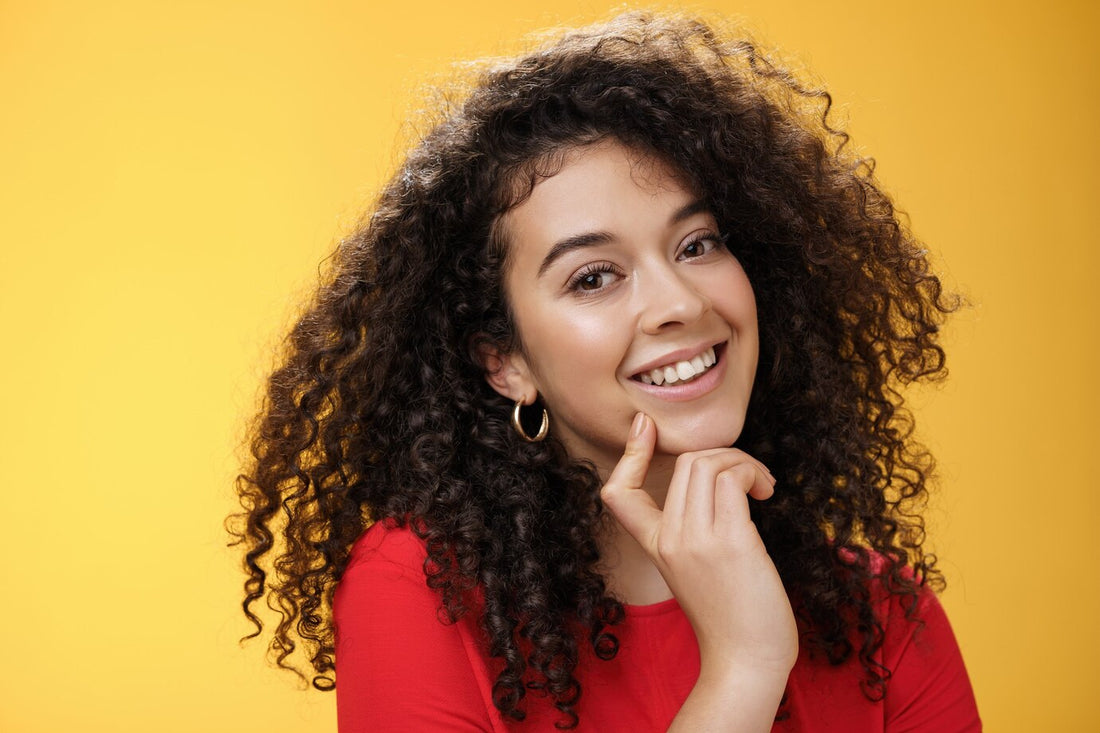Curly hair often needs extra care to stay healthy, hydrated, and manageable. One effective way to enhance your haircare routine is by using hair butter specifically designed for curls. This guide will help you understand how hair butter works, why it’s beneficial for curly hair, and how to incorporate it into your daily and weekly haircare practices.
What Is Hair Butter and Why It Works for Curls
Hair butter is a thick, nutrient-rich product formulated with natural butters like shea, mango, or cocoa butter, often blended with nourishing oils. It helps lock in moisture, seal split ends, and define curls without weighing them down.
For those with curly or coily hair textures, moisture retention is a key challenge. The natural oils from the scalp often struggle to reach the ends of curly strands due to the twists and turns of each curl. Hair butter acts as a sealing agent, helping to reduce breakage and enhance overall hair health.

Key Benefits of Hair Butter for Curls
1. Moisture Retention
Curly hair tends to lose moisture quickly. Hair butter forms a protective barrier over each strand, reducing moisture loss throughout the day.
2. Improved Curl Definition
Using hair butter can enhance curl pattern without stiffness or crunch. It defines curls while keeping them soft and flexible.
3. Reduced Frizz
Frizz is a common concern for curly hair, especially in humid environments. The rich consistency of hair butter tames flyaways and maintains smoother curls.
4. Protection from Breakage
Dryness and mechanical stress from detangling or styling can lead to breakage. Hair butter adds slip and elasticity, making curls easier to handle and less prone to snapping.
5. Versatility for Styling
Hair butter can be used in various styles — twist-outs, braid-outs, or as a finishing product for wash-and-go routines. It provides gentle hold and enhances natural texture.
How to Choose the Right Hair Butter
When selecting a product to boost your haircare routine with hair butter for curls, consider the following:
-
Ingredients: Look for products that contain natural butters (like shea or mango) and oils (like coconut, jojoba, or avocado). Avoid synthetic fragrances or silicones that may lead to buildup.
-
Hair Type Compatibility: Some hair butters are thicker and best for Type 4 curls, while lighter formulations are suitable for looser curls.
-
Added Benefits: Some formulas include vitamins or essential oils for additional scalp care or growth support.
Incorporating Hair Butter Into Your Haircare Routine
Weekly Deep Moisturizing Treatment
Use hair butter as a deep-conditioning sealant once a week. After washing and conditioning, apply a small amount of hair butter to damp hair, focusing on the ends. Cover with a shower cap and leave it on for 30 minutes before rinsing lightly or leaving in, depending on the product.
Daily Moisture and Curl Refresh
For daily use, apply a fingertip amount of hair butter to dry or damp hair. Rub it between your palms and scrunch into your curls. This method works well for reviving second or third-day curls without re-washing.
Protective Styling Companion
Hair butter is excellent for protective styles like braids, twists, or buns. Apply a moderate amount to sections before styling to reduce tension and keep hair nourished during wear.

Best Time to Apply Hair Butter
After Wash Day
Apply after washing while your hair is still damp. Hair butter helps seal in water-based moisture and offers long-lasting hydration.
During the LOC or LCO Method
Hair butter can be used in the LOC (Liquid-Oil-Cream) or LCO (Liquid-Cream-Oil) method. Depending on your hair’s porosity, you can experiment with layering it after a water-based leave-in and light oil.

Understanding Your Curl Type and Porosity
Knowing your curl type and porosity helps determine how often to use hair butter and how much to apply. High-porosity hair may benefit from frequent applications, while low-porosity hair might need lighter usage to avoid buildup.
Type 2 (Wavy Hair)
Use lightweight butters in small amounts for frizz control and definition.
Type 3 (Curly Hair)
Apply moderate amounts to retain curl structure and prevent dryness.
Type 4 (Coily Hair)
Use richer butters generously to maintain moisture and softness throughout the week.
Common Mistakes to Avoid
Using Too Much Product
Overusing hair butter can lead to buildup and dullness. Start with a small amount and increase if needed.
Applying to Dry Hair Without Moisture
Hair butter seals moisture—it doesn't provide it. Always hydrate your hair with water or a water-based product first.
Ignoring Scalp Care
While hair butter is great for strands, it’s not ideal for the scalp unless it’s formulated with non-comedogenic oils. Focus butter application on the hair, not the scalp.
DIY Hair Butter Options
For those who prefer natural DIY options, you can create your own hair butter blend at home:
Simple Hair Butter Recipe:
-
2 tbsp shea butter
-
1 tbsp coconut oil
-
1 tbsp jojoba oil
-
1 tsp aloe vera gel (optional)
-
A few drops of essential oil (e.g., lavender or rosemary)
Melt ingredients together, let it cool, then whip with a hand mixer until fluffy. Store in a clean jar and use within a few weeks.
Final Thoughts
Boosting your haircare routine with hair butter for curls is a reliable way to support healthy, defined, and manageable hair. By selecting the right formulation and incorporating it effectively into your weekly practices, you’ll help your curls retain moisture, resist breakage, and maintain consistent shape.
Every head of curls is different, and your haircare routine should reflect your hair’s individual needs. Whether you use a store-bought product or a DIY version, hair butter is a versatile and practical addition to any curly hair regimen.

